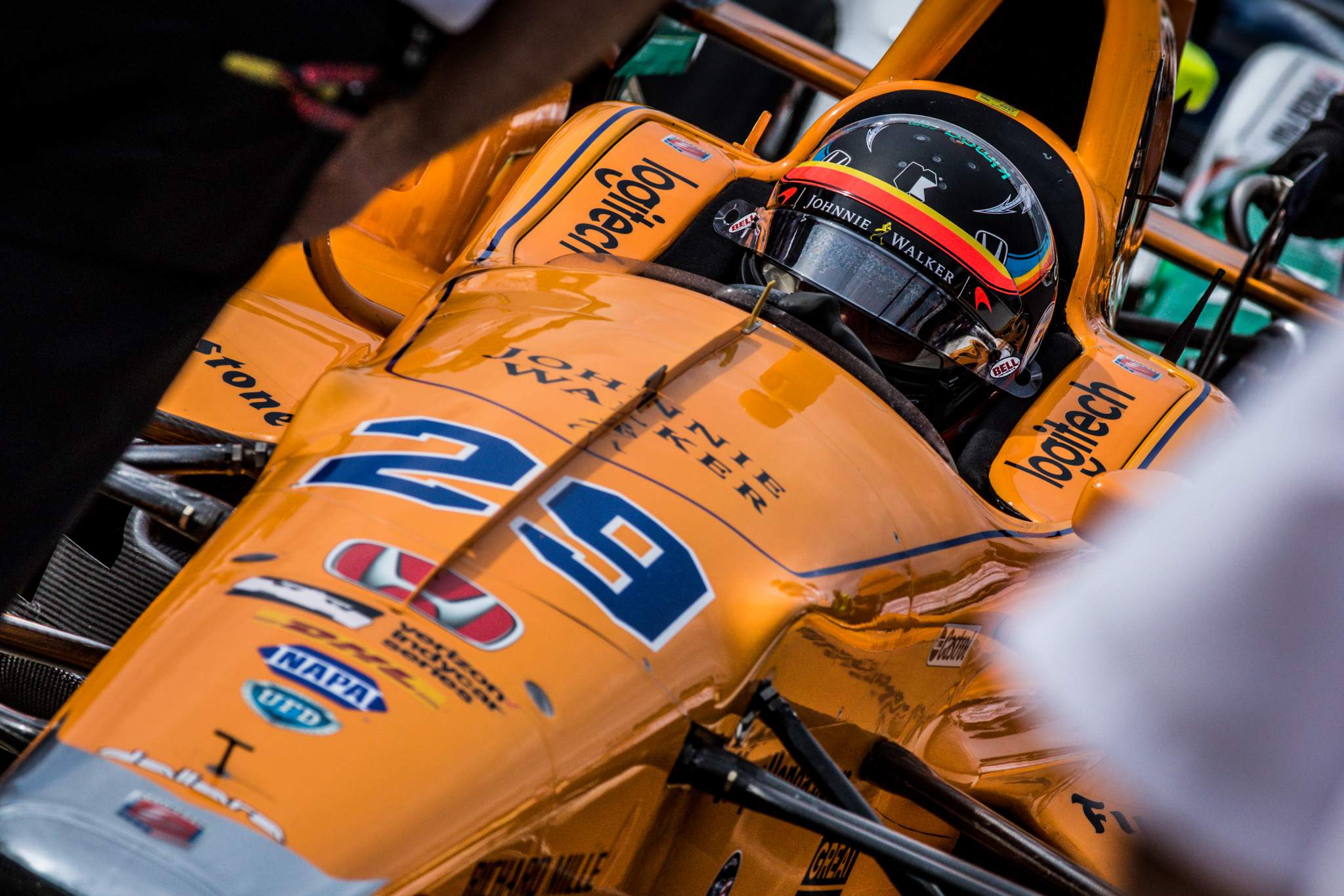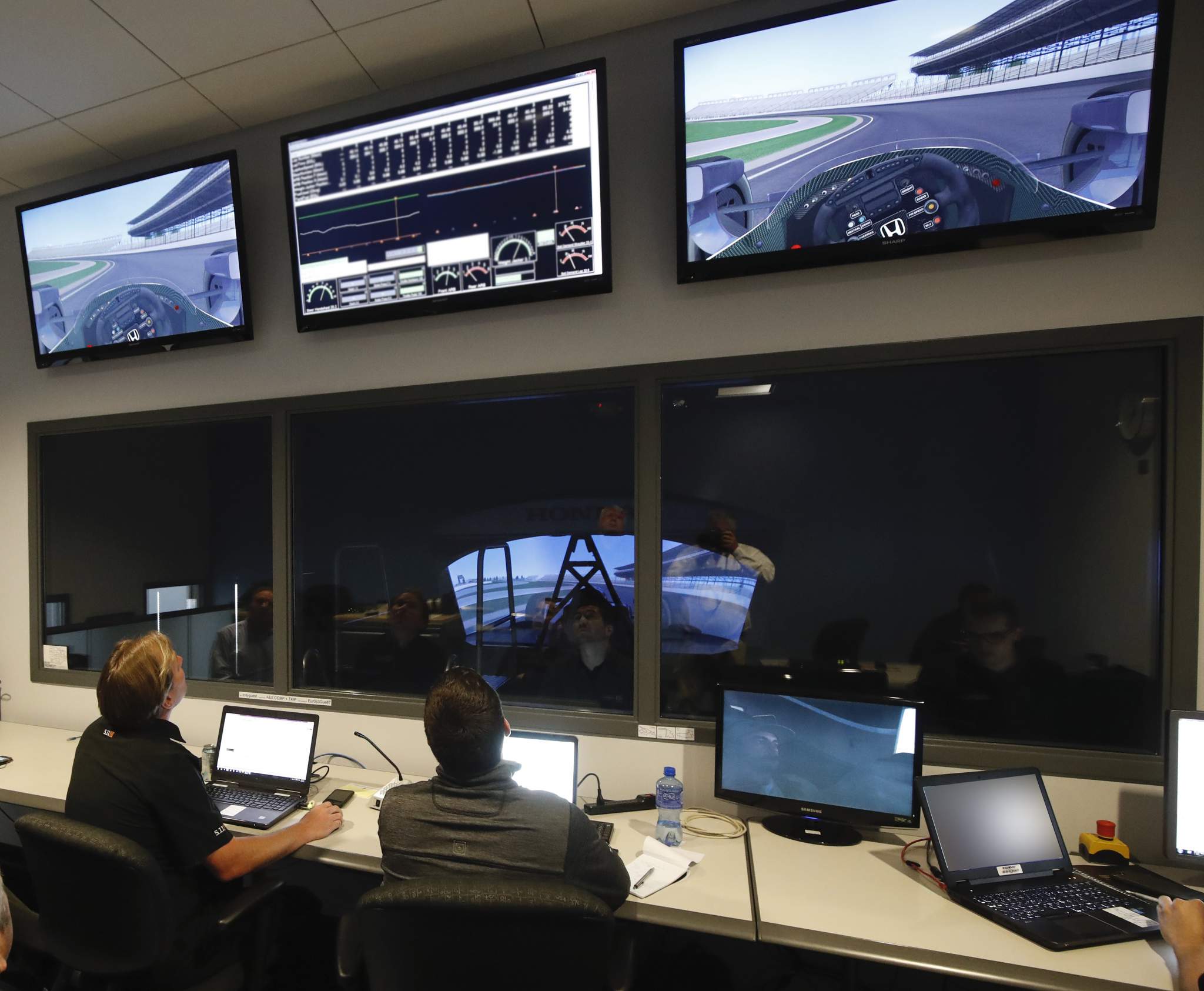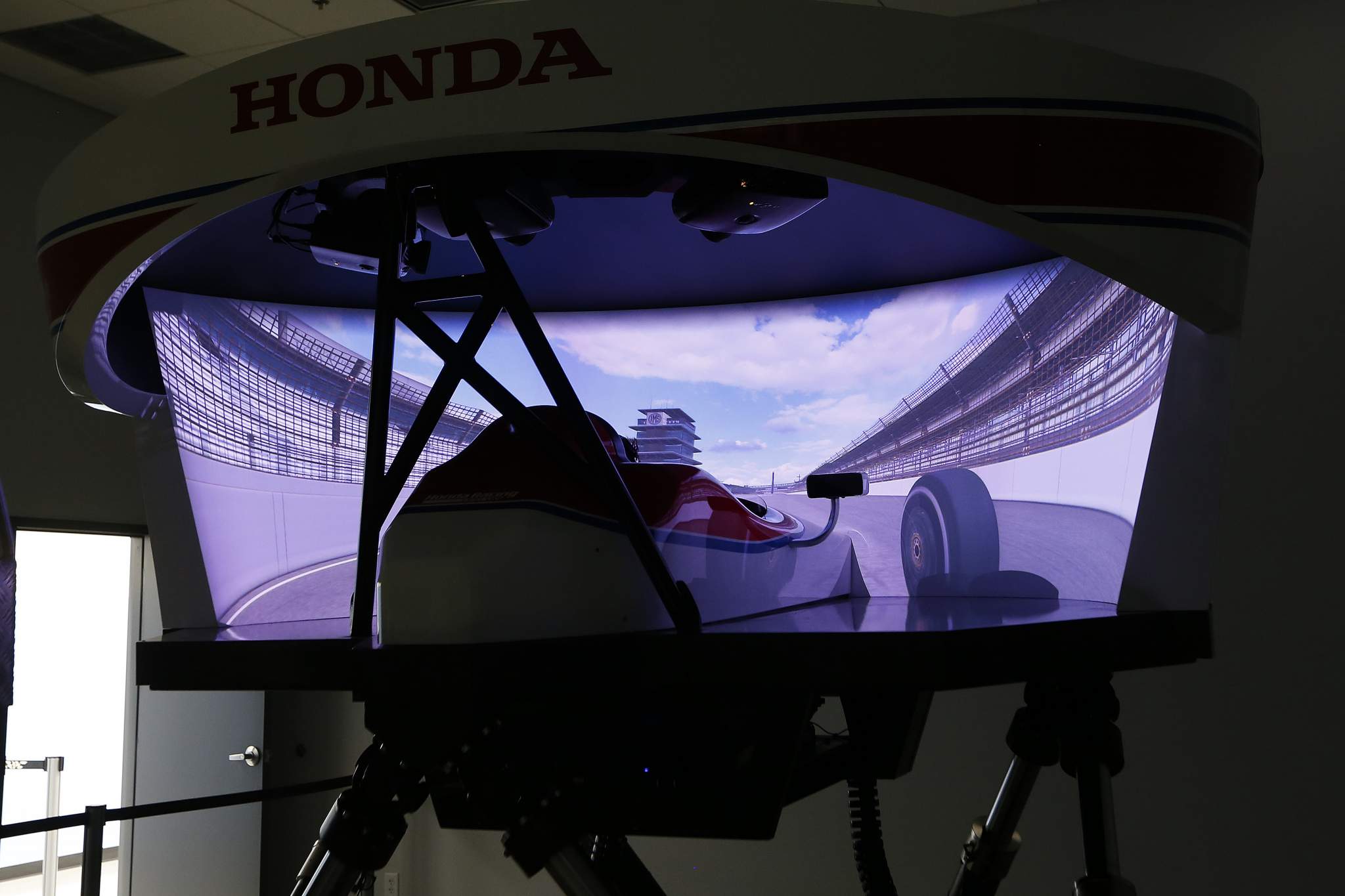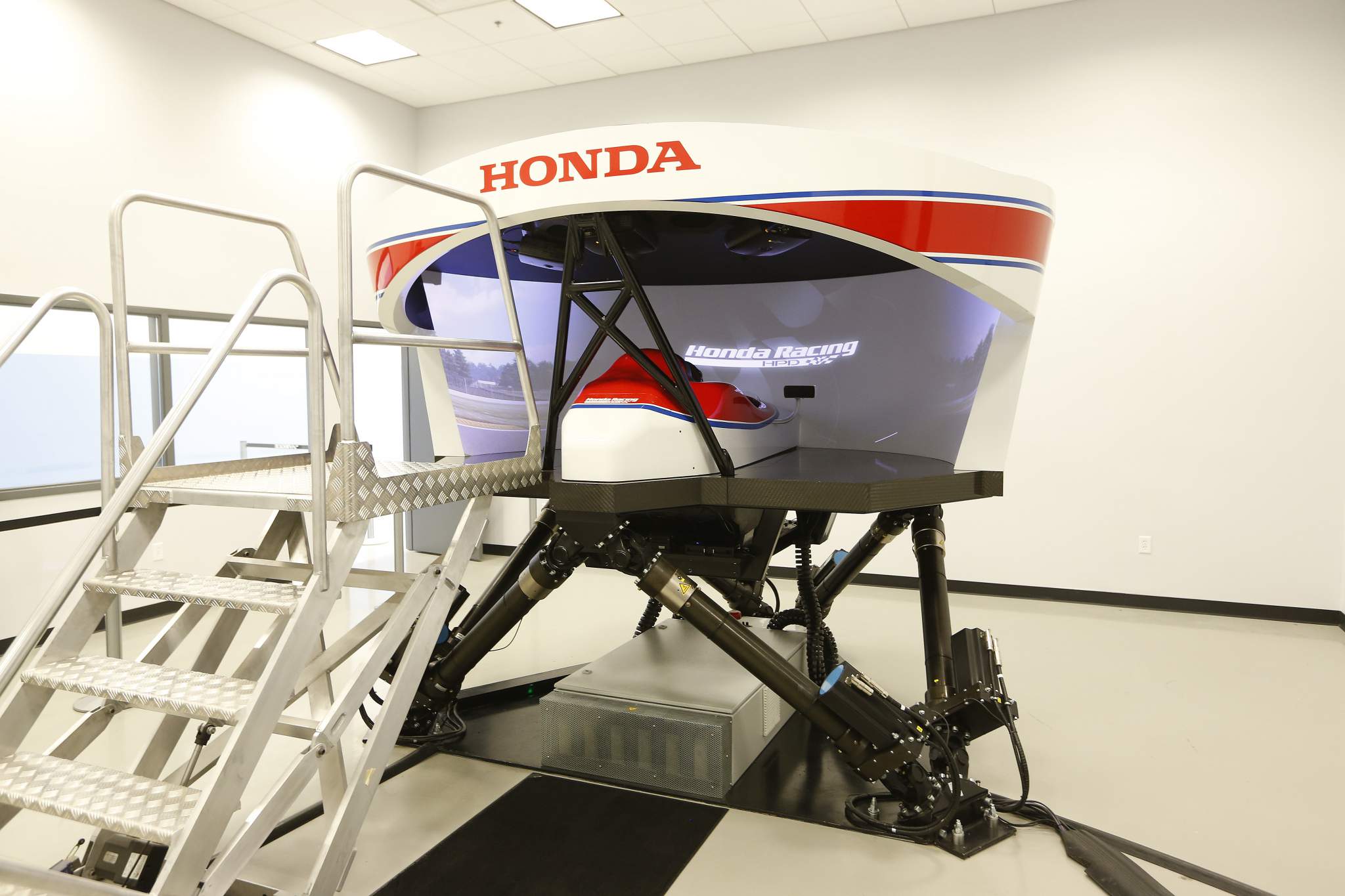Honda is “super thrilled” to have Romain Grosjean racing in IndyCar this year, and is hoping he can provide a benefit as big as Fernando Alonso did back in 2017 for the manufacturer’s simulator programme.
Grosjean will contest the road and street courses this season for Dale Coyne Racing, and the Honda Performance Development simulator will be vital to his adaptation for learning tracks, car behaviour and all of the tools on the steering wheel which are present in the Honda sim.
Both Chevrolet and Honda – the two engine manufacturers in IndyCar – have their own simulators which all of their teams will use for an engineering and driver’s benefit.
“We’re absolutely super thrilled to have him coming on board,” the head of vehicle performance at HPD, Ben Schmitt, told The Race in an exclusive interview.
“We’ve had a number of drivers that have driven pinnacle level simulators around the world and other forms of motorsport including Formula 1.
“They’ve come in and driven our simulator and it’ll be the same with Grosjean, obviously the simulator is our pride and joy we throw a lot of time and effort in so the first thing you want to know is, what do you think?
“It’s a funny thing because we’ve had drivers who have come in and have had plenty of F1 seat time, but if they haven’t driven the real car yet which is typically the case, they actually don’t have a real-world reference point.
“They don’t know what a real IndyCar feels like.”

That means Honda are playing the long game with Grosjean, in that he won’t be as effective for testing how accurate and the quality of the information correlated to the track initially, but when he’s up to speed in IndyCar his years of experience in F1 should allow the marque to take another step forwards with its simulator performance and the information gleaned from it.
It was a similar situation with Alonso back in 2017 when he contested the Indianapolis 500 for the Honda-powered Andretti Autosport squad.
When Alonso arrived, the simulator had just reached the point where Schmitt and his colleagues believed it was an extremely useful tool, having bought the sim back in 2013 and it didn’t suit the marque’s needs. Especially in the “maths and physics” of the vehicle model.
Alonso was the final seal of approval for how far HPD’s sim and the work into its development had come.
“We had a fantastic experience with Alonso a few years ago,” Schmitt adds. “I was talking earlier about how we transition the simulator into something that we felt was genuinely useful on a daily basis.
“When Alonso came in and ran with us, that was right at that point where we had got there, and we had no idea what to expect when he was coming in.
“I think that was our first flavour of a driver coming in from Europe, who understood that in F1, you do sim time whether you like it or not and you will find speed. You’ll find speed in yourself and in the car if you do it.
“He just came in, he was so workman like, and he was so easy to work with.
“We didn’t know what to expect so the whole thing was a big surprise, but a very pleasant surprise I would say, so we have similar hopes for Grosjean coming in as well.”

Asked to expand on how important Alonso’s feedback was at that stage, Schmitt adds: “For us it was sign-off or a validation.
“We’d had reasonable results running up to that Month of May, we were starting to think we’ve got our simulator really where it needs to be.
“When he jumped in and he ran around, and again it was a totally unfamiliar experience for him, not only as in IndyCar, it’s on big speedway.
“In the simulator there was a lot of feeling, or had been a lot of feeling in the years preceding that, that simulator was not going to be useful as an oval tool. That it was primarily for road and street courses.
“And I think we basically smashed that illusion or theory to pieces.
“He came in, he ran, he jumped out, he got in the car [in real life], he drove around and he was right there from the get go.
“But what really shocked us was, he called us up and said, ‘can I come back tomorrow – I’m going to run in the real car, can I come back in the morning, and run with you guys a little more in the simulator before I get in the real car’.
“For us, that was the ultimate sign off to say ‘yeah, we finally did something’. And I think after that it was just pure confidence from the years that have come since.”

Grosjean offers a different kind of upside to Honda. Where Alonso provided a benchmark for its sim just because of his general experience, he didn’t do the road courses and was therefore validating the sim for something that was new to him in ovals, limiting his effectiveness.
With Grosjean, once up to speed, he’ll provide real road course feedback at an F1 standard. He’s also had the experience of developing a simulator as Haas introduced its version in 2019 for F1 duty.
“He’s so invested in online racing and the simulator experience,” Schmitt adds. “That’s absolutely critical.
“In terms of the long game, the drivers that get the most value out of it – but then on the flip side, it’s an engineering gain because of that – is absolutely a function of whether the driver has bought into the technology.
“So if you have someone who’s bought in, and they already know ‘if I do well on the simulator or if I invest time in the simulator it’s going to pay back on the real track’, you’re golden, at that point.
“You’ll find that there are certain drivers that just get it, and they have a workman like attitude.
“And we’ve seen this in European drivers that have come over that have driven extensively in simulators, they already understand that ‘I’ve got to pound around in this thing and I’ve got to give my engineers good feedback’.
“Let’s hope that’s the case with Grosjean.”

That’s not to undervalue or underrate any of Honda’s other drivers, as all the Honda-powered teams will use the HPD simulator. The likes of Scott Dixon, Colton Herta, Alexander Rossi and even recent F1 exile Marcus Ericsson are valuable sim assets – vital in fact because of their more substantial experience in the category.
It’s just that Grosjean brings the opportunity for a fresh look at where the HPD sim is at and brings new experience to the table.
Of course, HPD is operating on a smaller budget than an F1 team would set aside for its simulator department. So that means it’s working its people even harder to ensure its validity and that means drivers as well as HPD staff like Schmitt, who’s worked for the everyone from the Ford World Rally Team through Forsythe and Andretti in his 20 year career.
“It’s diminishing returns on all these things,” says Schmitt. “So what ends up happening is, for a reasonable sum of money, which a car manufacturer could justify to enter any given racing series, you initially get a huge bang for your buck.
“Honda is a clever company, we try to spend our money wisely, we don’t just throw cash around willy nilly and that’s the same for our simulator.
“We just said, ‘Okay, what are the fundamental characteristics that we need to model really really well. Now what are the fundamental things that the driver needs to know when they’re sitting in it, and how much of that can we get for a reasonable investment’.
“I always say if a driver is coming to the simulator or teams coming into the simulator, they run through a test plan and 50% of the changes replicate what they see on track the next weekend or they had seen on the previous weekend, it’s not a yield to me.
“Because I can flip a coin for changes and come out with a 50% hit rate, it’s no better than just not coming to the simulator at all.
“So for us the proof has to be in the pudding, it has to be in the hit rate, and the hit rate has to be well, well in excess of 50%, and we’ve got there now.
“So it’s not 100% hit rate, but I think if you talked to F1 teams and certainly we’ve talked to drivers who’ve driven F1 simulators, it’s not 100% hit rate for anyone in the world of motorsport.
“I think we’re happy for what we’ve got. And I think probably we’ve done it on a tiny fraction of what a Formula 1 simulator would cost.”

The sim was used less frequently or perhaps less efficiently at times last year because of COVID and the travel restrictions and things like social distancing.
However, the benefits of the sim were clear as – it was able to run its models and get its engineering data without a driver in the sim – it hit the ground running with three race wins to start the season and won the championship and Indy 500 – the double all teams and manufacturers are looking for from an IndyCar season.
Grosjean’s sim time hasn’t been fully arranged yet as it hinges on travel plans and COVID testing, but there are hopes for sim work before his first real-life test on February 22 at Barber Motorsport Park in Alabama, if not after where he will also have three more tests before the season starts at the same track in April.
When Grosjean does finally get in the sim, Honda will be hoping to extract as much benefit from him, as he is hoping to extract from the simulator for his own gains in 2021.
Images courtesy of HPD/Motorsports Images







